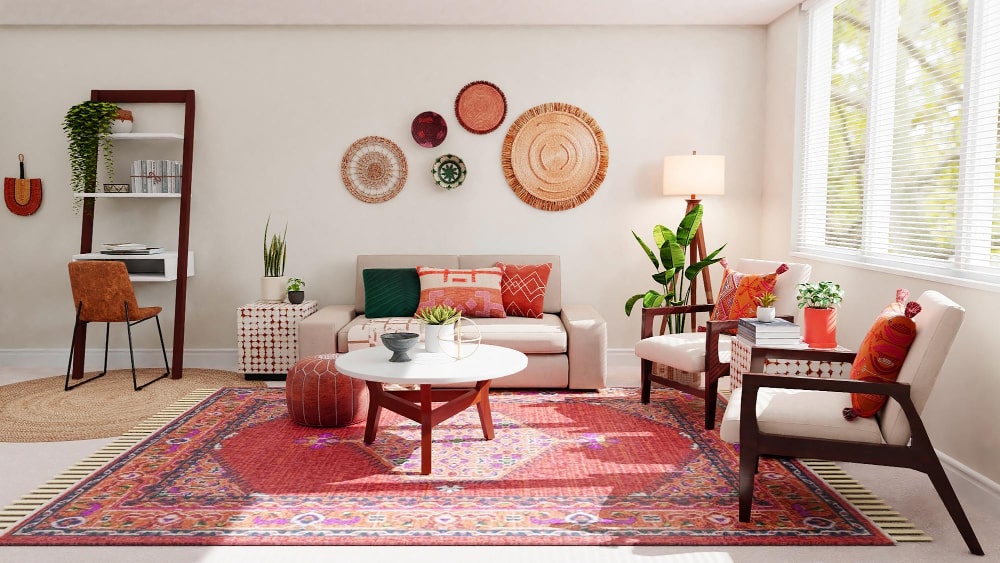Partner with an expert Architecture Firm to build your vision.
Partner with an expert Architecture Firm to build your vision.
Blog Article
Transform Your Home With Vital Concepts of Interior Design and Aesthetic Appeals
The art of changing your home via the necessary principles of interior decoration and visual appeal needs a thoughtful strategy that integrates shade, balance, and spatial understanding. By recognizing the influence of color concept and the value of appearance and patterns, one can create rooms that are not only aesthetically attractive but likewise deeply personal. Achieving this stability includes greater than mere decoration; it encompasses a strategic setup and an eager understanding of how each element connects within a room. As we discover these foundational concepts, take into consideration how they might redefine your understanding of home and personal expression.
Recognizing Shade Theory
Understanding the concepts of color concept allows designers to create rooms that reverberate mentally with passengers while satisfying practical requirements. Each classification plays a crucial function in establishing harmony within a space.
The psychological effect of colors is extensive; warm tones such as reds and oranges stimulate power and heat, while awesome tones like blues and eco-friendlies advertise peace and harmony. The use of corresponding shades improves visual rate of interest, producing striking contrasts that can raise a room's charm.
Neutral colors, on the other hand, work as a functional background, allowing various other layout elements to shine. It is necessary to think about elements such as illumination and the room's function when selecting a color scheme, as these can modify the perception of colors throughout the day.
Inevitably, a well-considered shade scheme can change a room, fostering a feeling of comfort and design that aligns with the residents' choices. Proficiency of shade theory is, therefore, an important skill for any type of indoor designer intending to create unified and inviting settings.
Accomplishing Balance in Design
How can developers achieve a sense of balance in their rooms? Attaining equilibrium in layout is basic to producing unified insides.
Unbalanced balance, on the other hand, relies upon varying components that still achieve a natural appearance. This approach enables for more dynamic and casual plans, giving rate of interest while maintaining balance. By thoroughly picking differing sizes, shades, and textures, designers can create an aesthetically compelling room that feels well balanced yet energetic.
Radial balance emphasizes a main centerpiece with elements emitting exterior. This style is commonly seen in circular designs, where furnishings and style create a cohesive border that attracts the eye internal.
Eventually, accomplishing balance calls for thoughtful consideration of range, percentage, and the partnerships between components. interior design firms. By masterfully using these equilibrium principles, developers can change areas into environments that really feel both visually pleasing and functionally unified, improving the total experience for owners
Significance of Spatial Understanding

An eager feeling of spatial awareness permits developers to determine centerpieces within a space, leading the customer's attention to vital features while keeping a general feeling of unity. It also helps in the critical positioning of lights, which can drastically affect the perception of room and state of mind. Recognizing spatial partnerships allows the developer to provide to the certain needs of residents, ensuring that each area serves its desired objective without compromising aesthetics.
Eventually, spatial recognition is crucial for taking full advantage of the potential of any type of interior space. By her comment is here meticulously considering the interplay between measurements, design, and function, developers can develop atmospheres that not only meet useful requirements but also evoke a feeling of comfort and charm, enhancing the general living experience.
Including Structure and Patterns
Welcoming a diverse variety of textures and patterns can dramatically boost the aesthetic and responsive charm of an interior room. The strategic usage of different products-- such as wood, metal, textile, and rock-- creates deepness and rate of interest, making a space feel extra welcoming and vibrant. Incorporating smooth surface areas with rough appearances can develop a balance that draws the eye and involves the senses.
When incorporating patterns, consider both scale and rep. Big patterns can function as prime focus, while smaller, refined styles can complement various other components without frustrating the space. Layering patterns, such as pairing floral pillows with candy striped tosses, includes intricacy and a sense of harmony if performed thoughtfully.
It is additionally important to preserve a natural shade palette, making sure that structures and patterns collaborate instead of contend for focus. By picking a few essential appearances and patterns, you can produce an unified visual that reflects your personal design while boosting the total setting of the room. Eventually, the careful consolidation of these aspects can transform a mundane area right into an advanced setting rich with character and heat.
Customizing Your Space
Developing a space that mirrors your individuality is essential to attaining a really i was reading this welcoming atmosphere. Customization in interior design permits you to infuse your one-of-a-kind style and passions into your home, changing it from a plain shelter right into a shelter that speaks to who you are. Begin by selecting a shade palette that resonates with your emotions-- bold shades can stimulate, while soft tones provide peace.
Include artwork and design that show your passions, whether it be traveling, nature, or abstract ideas. Displaying individual collections, such as publications, photographs, or keepsakes, can evoke valued memories and develop prime focus within an area. Furthermore, consider customizing useful items, like upholstered furniture, to straighten with your visual choices.

Final Thought
Finally, the change of a home through the vital concepts of interior decoration and looks necessitates a detailed understanding of shade concept, balance, spatial understanding, texture, and personalization. Each element adds substantially to creating an unified and practical living environment - Architecture Firm. By attentively integrating these principles, individuals can improve the visual allure and emotional vibration of their spaces, inevitably cultivating a home that shows special identifications while giving convenience and usefulness
Report this page